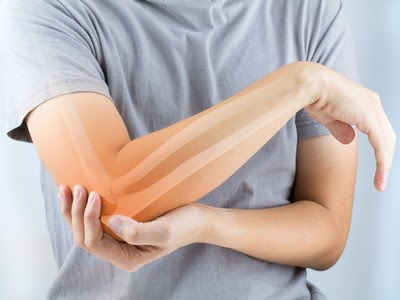The Weather really affects arthritis? Arthritis and its many forms, is just one of the conditions that some believe is directly affected by the weather and changes in barometric pressure. Weather and Arthritis Pain Research In the 1960s, an arthritis specialist named Dr. famous J. Hollander orchestrated a study to demonstrate how high humidity levels with low air pressure increased stiffness and joint pain in patients with arthritis. Fibromyalgia patients in this study reported more pain than during the days of high pressure. At the end of this study, no significant links between changing weather conditions and an increase in arthritis pain were ever found. Because time is supposed to affect Arthritis Pain, Cold and rainy weather is often accompanied by a drop in air pressure distinguished. Types of climate change that can affect the pain of arthritis Barometric pressure, or air: Although the increase in barometric pressure, which is the amount of force or weight exerted by the air around us can also affect some types of arthritis pain, usually, there is a rapid decline in air pressure, such as the decline associated with the global storm, which causes an increase in aches and pains. Moisture The amount of water vapor in the air is called humidity, absolute humidity and relative humidity.
Temperature: Cold weather has been associated with arthritis pain and stiffness of the joints and trigger a series of other conditions such as migraine headaches or circulatory problems. For example, in a study of the pain of arthritis, people living on the West Coast of the United States in a milder climate reported just as much pain as those living in the East, cold country.
Does time really affect arthritis?
Arthritis and its many forms, is just one of the conditions that some believe is directly affected by the weather and changes in barometric pressure.
Weather and Arthritis Pain Research
In the 1960s, an arthritis specialist named Dr. famous J. Hollander orchestrated a study to demonstrate how high humidity levels with low atmospheric pressure increased stiffness and joint pain in patients suffering from 'arthritis. Dr. Hollander be concluded that when the barometric pressure drops, the swelling around inflamed joints increases, causing irritation to the surrounding nerves, which then also increases the amount of pain experienced. All participants lived in the same climate, warm and kept a record for a year, recording all changes in their level of pain. These documents were then compared with daily changes in climate, such as relative humidity and temperature.
In this study, some people with rheumatoid arthritis seems to be most affected by high levels of humidity and air pressure, while others in the osteoarthritis group felt more pain when only the humidity is high. Fibromyalgia patients in this study reported more pain than during the days of high pressure. However, none of the results were strong enough to stand on their own time to predict impending changes in pain levels.
At the end of this study, no significant links between changing weather conditions and an increase in arthritis pain were ever found. However, some women have reported experiencing more pain in their hands when the barometric pressure was its highest.
Because time is supposed to affect arthritis pain. The cold and rainy weather is often accompanied by a drop in air pressure distinguished.
Types of climate change that can affect the pain of arthritis:
- Barometric or air pressure: Although the increase in barometric pressure, which is the amount of force or weight exerted by the air around us may also affect certain types of pain of arthritis, Most often, there is a rapid decline in air pressure, such as the drop that is associated with the storm, which causes an increase in pain and pain.
- Humidity: The amount of water vapor in the air is considered humidity, absolute humidity or relative humidity.
- Temperature: Cold weather has been associated with arthritis pain and stiffness of the joints and trigger a series of other conditions such as migraine headaches or circulatory problems. Temperatures that increase or decrease rapidly are again the result of barometric pressure changes.
It is important to remember that although certain types of weather can negatively affect some of the symptoms of arthritis such as pain and swelling, there is no scientific evidence that these climate changes are what causes one to develop arthritis in the first place, or with joint lesions.
While it is true that there is evidence that some people living in drier, more arid places have fewer episodes of arthritic pain, there is no type of environment that guarantees complete relief from the pain of arthritis. For example, in a study of the pain of arthritis, people living on the West Coast of the United States in a milder climate reported just as much pain as those living in the East, cold country.
In many countries and regions in Europe and Asia, homeopathic treatments are rather common for treating pain associated with arthritis. Various herbs and natural substances are often combined to create remedies for arthritis pain, as opposed to using traditional medicines.


0 komentar